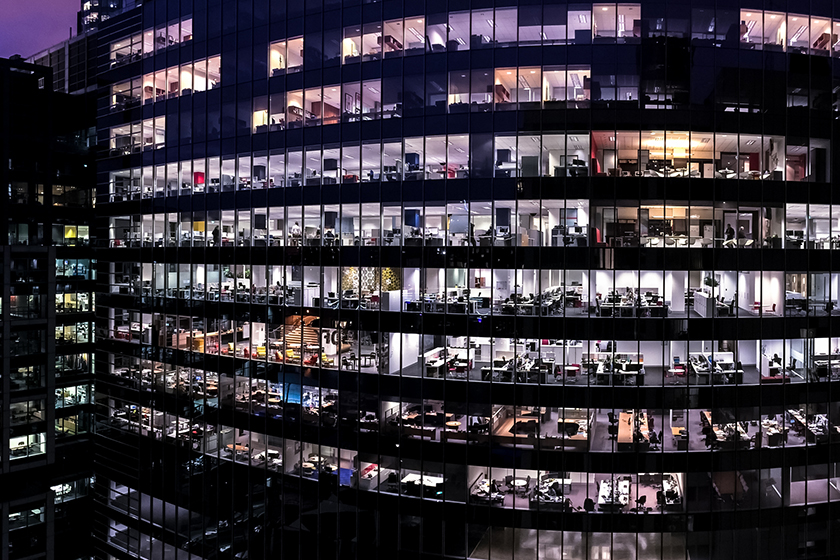This policy could make women's super more vulnerable to financial...
Australia’s opposition says early access to superannuation is an election policy for the party’s campaign. But...
READ MORE
In 2024, there is still a place for physical workspaces – but employers need to think carefully about when and how to use them
Matching infrastructure to how we work is an age-old issue.
And since COVID-19 lockdowns brought remote working into the mainstream, it’s getting even harder for employers to deliver infrastructure that meets workers’ needs.

Employees are more informed than ever, with higher expectations and lower tolerance for workplace environments that perform poorly.
They are also increasingly frustrated by ‘purposeless engagement’; or being asked to be physically present without a ‘good’ reason.
But, as our new research shows, there is still a role for physical office spaces.
And, when the space is right, there are benefits for both employers and employees.
Despite nine out of ten Australian businesses mandating people back to the office three or more days a week, office attendance remains 30 per cent below pre-pandemic levels.
Mandated attendance is a blunt instrument for solving the problem of empty office spaces. And it’s not working – Australian CBD office vacancies are at their highest level since the 1990s.
Instead, employers need to re-think the purpose of office space to support new ways of working.
Specifically, they need to evaluate the performance and quality of the space and whether it supports employees’ work-life balance and wellbeing.
With the majority (63.6 per cent) of Australian workers feeling burnt out, as well as two in five reporting low levels of thriving and one in four reporting average or poor work-life balance, this is more important than ever.
Hybrid working – the ability to choose the work setting most conducive to getting the task done – is the antidote to many of the root causes of this dissatisfaction (like long and expensive commutes).
We recently evaluated Mirvac’s new Adaptive Workplace environment in Sydney. It’s a ‘test and learn’ space exploring the most effective tools and layouts to support hybrid work.
An adaptive space allows people to adjust the workspace to suit their needs at a specific point in time, meaning the space is designed with this flexibility in mind. Further, technology allows for seamless integration and use, supporting synchronous and asynchronous interactions.
We found when spaces are allowed to be adaptive and supported by the right design, tools and technologies, teams perform successfully and individuals experience a greater sense of connection and belonging. When trusted by managers, teams will seek to find the right balance between ‘me’ and ‘we’ time while sustaining strong performance.
Importantly, to deliver these kinds of outcomes, spaces cannot be ambiguous; there must be a clear purpose in their design (and it’s probably related to tasks that cannot be done from home).
Strong leadership that empowers employees to make conscious decisions about balancing work and lifestyle is also important.
In a separate piece of work on high-performance open-plan offices certified by the International WELL Building Institute, we found visual privacy and access to outdoor environments are key predictors of productivity.
Another recent study of a mixed-use workplace in Melbourne revealed how biophilic design principles (which focus on connection to nature) can create environments more attractive to workers than their home offices.
The ongoing ramifications caused by the tensions of remote work risk a collapse of our current corporate real estate models.
With the vacancy rates of office buildings rising, especially in business districts, we need to retrofit and adapt existing building stock to keep our cities vibrant.
When employers use evidence to assess office space needs for their organisation and find that they need less office space, existing buildings can be used for alternative purposes.
An example of this is the former headquarters of Australian Unity in Melbourne, which is being transformed into a residential aged care facility.
However, because we are neurologically hardwired as humans to be physically together and learn from one another, there will always be a place for shared working environments.
They allow the formation of new rituals and bonds amongst teams (social capital) that can bridge the conflicting priorities of ‘me’ and ‘we’ in the workplace.
If we are completely removed from the physical workplace without proper care for meaningful interactions, our professional identities may suffer.
While many of our ‘old’ offices are no longer fit for purpose, we still need to physically work together some of the time. We just need to rethink the purpose of office spaces and how they can support employees to do the tasks that make it ‘worth’ coming together at the same place and time.
Rethinking workspaces and repurposing existing buildings that have fallen out of use is a big task, but it cannot be avoided.
Raising the bar on workspace performance is not only imperative for humans and the planet but also for business.
Original article published by University of Melbourne. Authors: Associate Professor Christhina Candido and Dr Behnaz Avazpour, University of Melbourne; Iva Durakovic, UNSW and Dr Samin Marzban, University of Wollongong